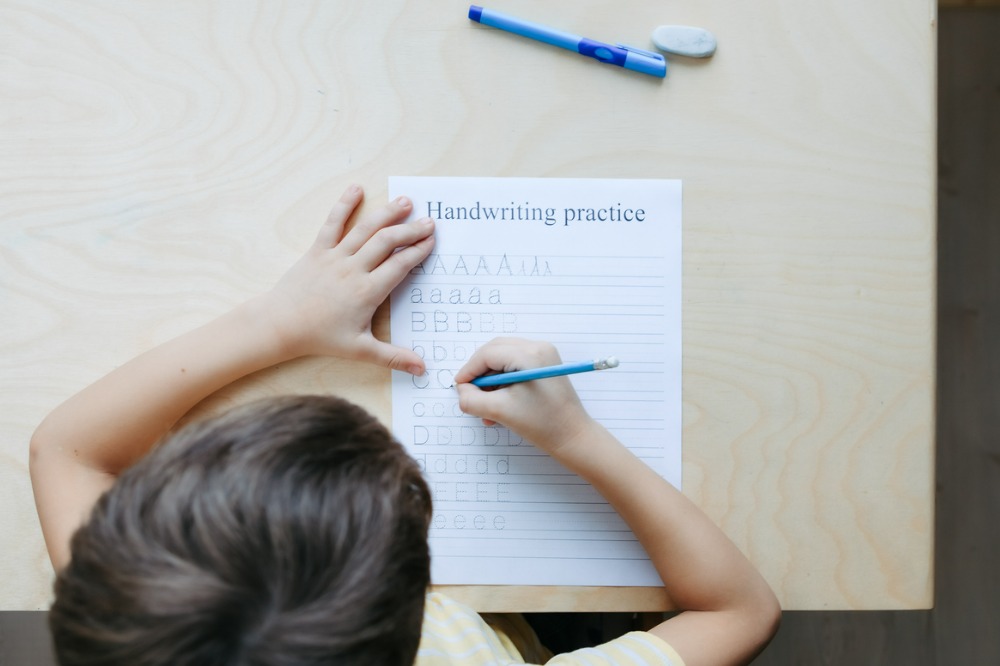
Research spanning over two decades confirms that primary students achieve higher writing quality using traditional pen and paper handwriting over keyboards and digital devices.
Dr Anabela Malpique, a Senior Lecturer in Literacy at Edith Cowan University’s School of Education, led a meta-analysis to examine studies published between 2000-2022, comparing the effects of writing by hand or keyboarding on primary students’ writing performance (Foundation-Year 6).
The research found that despite being ‘digital natives’, primary students produce higher quality writings using paper and pen(cil) than when using a keyboard. A separate recent large-scale project examining the writing performance of 544 Year 2 children in WA found that children wrote longer and higher-quality handwritten texts.
A balanced approach is key
Dr Malpique said the study highlights the importance of balanced approach to teaching of both handwriting and keyboarding from early education through to secondary school.
“We argue that it is vital to teach handwriting in the first years of schooling and to continue supporting the development of handwriting skills across primary and secondary years,” Dr Malpique said.
“Handwriting skills are connected to improved spelling and greater capacity to write longer and higher-quality texts. Handwriting also promotes our capacity to learn and memorise information.”
Dr Malpique also pointed to the importance of young people developing transcription skills.
“Transcription skills refer to spelling and how quickly and accurately children can handwrite or type, also called automaticity,” she said.
“Our research has consistently shown that young children’s spelling and capacity to automatise handwriting and typing predicts the quality and the length of their texts.”
Simply put, says Dr Malpique, children can better focus on what they want to say when handwriting or typing becomes automatised.
“Writing resembles other complex skills, such as driving a car. Unless we automatise the management of gears, pedals, blinkers, and wipers [transcription skills] we cannot select the most efficient or the most scenic route [creating texts].”
Key takeaways for teachers and parents
As a complex skill, writing needs practice and perseverance, Dr Malpique pointed out.
“By working in collaboration with families, teachers can maximise opportunities for practice and enjoyment of writing or typing,” she said.
Below, she shares seven tips for teachers and parents to consider.
- Dedicate time for practice: Teachers can build regular practice routines in class and send home mini-tasks such as 10-minute writing or spelling prompts (writing a shopping list; finish a story; spot the spelling mistakes)
- Become a fellow writer by modelling: This means joining the writing as opposed to “policing” the writing. As you write you can talk about what you will write (planning), and you can share ideas about how you can make your writing clearer or more exciting.
- Talk about your mistakes and find ways of correcting your writing: When adults talk about their errors or doubts, they make them a natural part of the process. When they correct them, they show children strategies to revise their own writing.
- Read what you have written: Reading what you have written provides opportunities for correction and celebration. Praise children’s risky attempts such as using new words or experimenting with expressions.
- Give children choice: The more children are in control of the process, the more likely they will enjoy it. They can choose topic, they can mix art and letters, they can choose paper or keyboard!
- Showcase the writing: Make children’s writing visible on your walls, on your fridge or as wallpapers on your devices. Writing samples can also be a great way to show children how much they have grown as writers.
- Aim for automaticity: Find opportunities that let children see the importance and purpose of writing and keyboarding in their daily lives.


